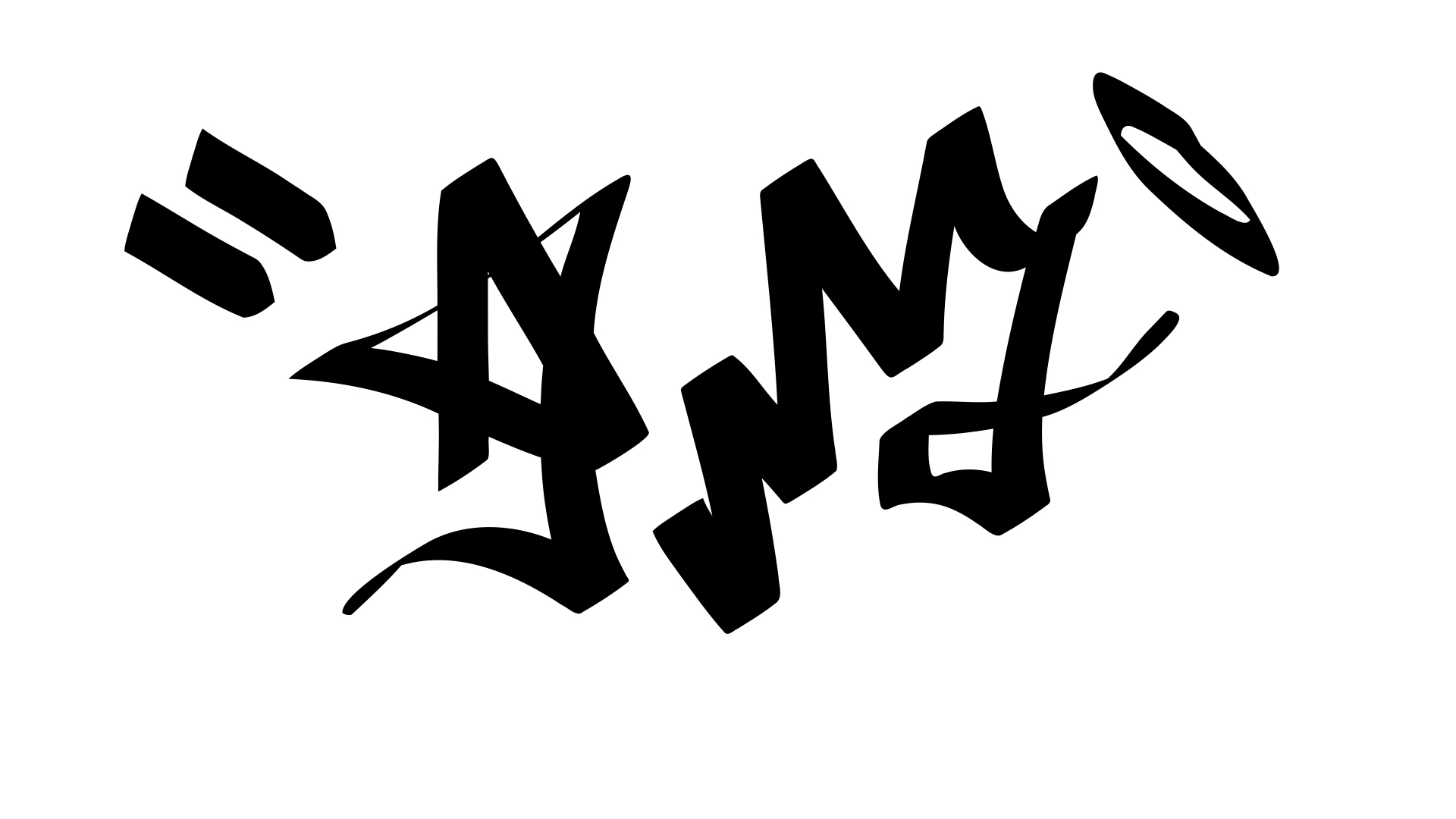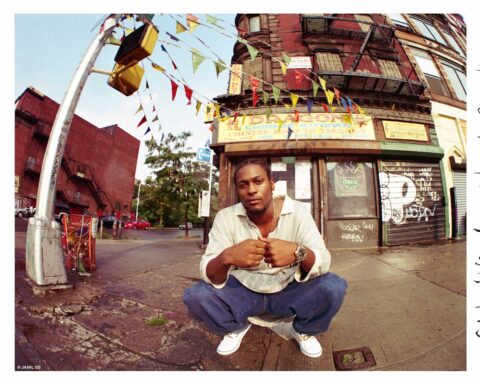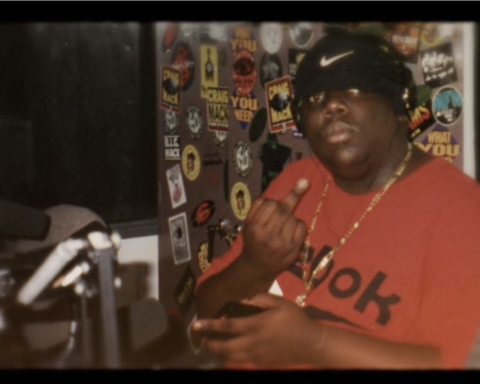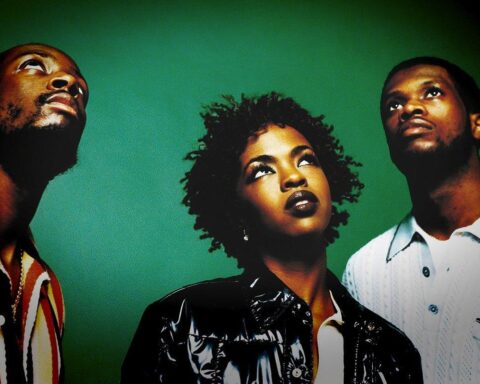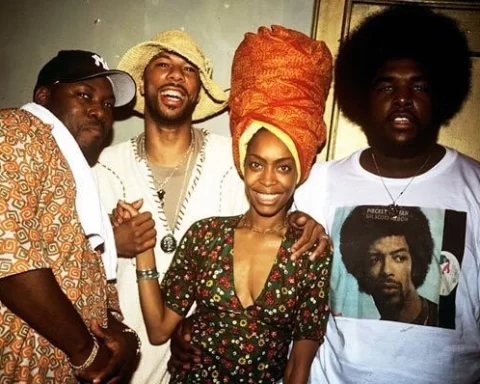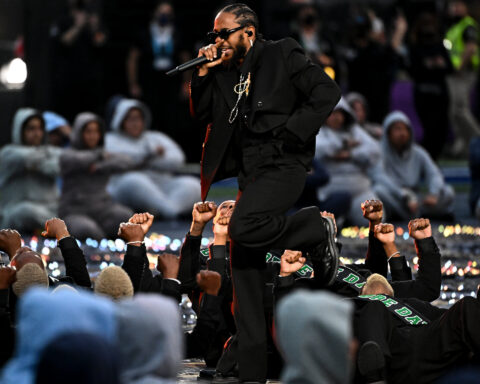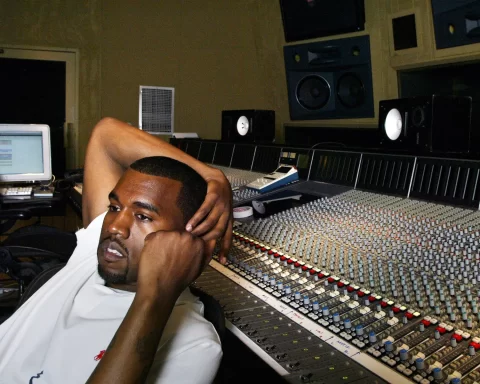The problem with Golden Eras is that we don’t always recognize them; we only recognize them after they have passed. According to consensus, the hip-hop Golden Era began in the late 1980s and lasted until the mid-1990s.
This period encompasses the enormous creative stretch during which album-length ambitions, technological advancements in sampling, and intense competition for mixtape and airplay positioning could be found simultaneously in the major labels, hip-hop imprints, and independent labels.
I can’t even hold you, the new age of rappers have nothing on any track that came from the late nineties. The Notorious B.I.G., Gang Starr, Redman, and Scarface all released career-defining music in 1994, and Organized Konfusion, Artifacts, and Gravediggaz released cult classics. Even in the waning years, there was gold: this was the year of the release of the debut albums by Nas, OutKast, and The Notorious B.I.G. No matter if “Time’s Up,” “Regulate,” or “Sabotage” was your favorite songs of the year, if you lived through 1994 and believed that “this is the end of an era” at the time, you were probably a pessimist.
However, Common’s first major signature hit, “94,” was about how hip-hop was beginning to lose its direction, so by the time the Golden Era came to an end, there was already a sense that its tenuous legitimacy was under attack from all directions. It was generally accepted by 1996 that if hip-hop sucked that year, you could just say “it’s the money” as the reason and get at least a few nods of recognition. Some people point to the coast wars, the deaths of 2Pac and Biggie, the rise of the South, the “shiny suit era,” and the prevalence of R&B crossover as the events that marked its end.
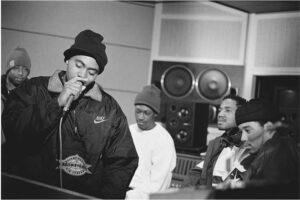
Hip-hop could also be made without having a lot of money if you had the kind of work ethic where whatever money you made would just go back into the music, but that increasingly seemed like a sucker’s option when the late ’90s record industry bubble economy seemed to be able to give anyone they wanted in terms of yachts and Mot bottles. Therefore, you had to really need it if you were trying to build a kind of alternative, independent, distinctly underground type of hip-hop. And even if the disillusionment hinted at by artists like Common and DJ Shadow wasn’t the predominant response, it was strong and deeply rooted enough to contribute to the development of a support system for artists just far enough beyond mainstream America’s Will Smith comfort zone.
These support systems frequently end up taking an artist further than anyone anticipated, whether it was a single gem of an album or the start of a career that is currently churning out must-own records. The history of underground hip-hop — or indie rap, or backpack rap, or whatever your favorite messageboard’s preferred subgenre/euphemism/epithet of choice was — isn’t that dissimilar in its essence from other underground permutations of popular music, whether you’re talking about free jazz, punk, thrash, or any other scenes that emerged to fill a void that needed a few more loud weirdos.
However, underground rap really took off when college students had the time and resources to sift through all of this information on the fledgling World Wide Web, especially when combined with fast-moving independent scenes and a bumper crop of indies that appeared to have a presence in every major city, including earlier-established companies like Delicious Vinyl, Mo’ Wax, and Solesides, as well as later-established labels like Fondle ‘Em, Rawkus, Rhymesayers, and Stones Although underground hip-hop extends back to before 1995, it was in the second half of that year that things began to change so drastically and quickly that we are still experiencing the effects today.
Not just in terms of how many of these musicians are still releasing albums, but also in terms of how many musicians are still working in the underground 20 or more years later and carrying on these ideas. These songs and performers are the reason you should fuck with Open Mike Eagle, Billy Woods, Noname, Boldy James, the Koreatown Oddity, or anyone else in that artistic community.
The Pharcyde – “Runnin'” (from Labcabincalifornia, 1995)
Let’s start by building a bridge between the uprising wave of West Coast indie music in the early 1990s and all the potential dynamism, insight, and innovation that underground hip-hop would develop by the decade’s close. When The Pharcyde released Labcabincalifornia, their 1995 follow-up to their ’92 debut Bizarre Ride II The Pharcyde, they already had a solid following and were on the verge of cult celebrity. The album gave their previous comic material a more reflective and somber tone. And while it would take the album years to shake off its divisively downcast sound, which was contributed by an up-and-coming Detroit producer by the name of Jay Dee, the album’s debut single “Runnin'” was immediately acknowledged as one of its high points (and the year).
“Runnin'” is fueled by an almost excruciating amount of self-conscious reflection, similar to a moodier sequel to the unrequited-young love anthem “Passin’ Me By.” The air of deceptively mellow but intensely energizing reflection that would be one of indie rap’s defining characteristics for the remainder of the decade and beyond is further amplified by Jay’s Stan Getz samba-jazz loop.
J-Live – “Braggin’ Writes” (12″, 1995)
Rapping about rapping—the recentering and skill-race showoff—is another one of the calling cards, it should be mentioned. And while many of the clichés about backpacker lyricism’s “scientific lyrical miracle” are true in some ways but unfair in others, it’s because of songs like J-“Braggin’ Live’s Writes” that we have a standard to compare those lyrics to and find them wanting. The first line of the NYC rapper’s mission statement, “For underground metaphors/ You can scrape an inch below the turf, for what it’s worth/ My style’s been developed in the core of the Earth,” served as a challenge to lower-level MCs and a disclaimer about why accepting that challenge would be foolish.
A variety of similes and metaphors are used as punchlines, from a medical student to a chess grandmaster to a rap historian (“You belong in Special Ed if you think you have it made,” to “The penetration’s perfect, like amniocentesis”). similarly sharp pain from a continuous flow that always hits hard. His label-purgatory contract caused him to wait more than five years between his “Unsigned Hype” status in The Source in November 1995 and the actual release of his debut album, The Best Part, in 2001. At that point, “Braggin’ Writes” received a revisit, but that only served to highlight how far ahead of the curve he was. Oh, he’s scraping the decks there, too, in case you thought being a tight MC wasn’t enough.
Dr. Octagon – “Blue Flowers” (from Dr. Octagonecologyst, 1996)
Kool If by “crazy” you mean “can sound fly even rapping total rubbish” and by “bastard” you mean “stylistically fathered by immaculate conception,” then Keith has always been a bastard. The Ultramagnetic MCs served as his endlessly influential but underappreciated Velvet Underground, and his collaboration with Dan “The Automator” Nakamura served as his surprise hit Transformer, even though Dan wasn’t Bowie-famous and was still a few years away from having his own goon squad. He is the closest thing hip-hop has ever come to a true Lou Reed analog (beep, beep).
The producer, the MC, and everyone else in their sphere let their most macabre ideas run wild on Dr. Octagonecologyst, from DJ Qbert, a guest turntablist, slathering Skratch Piklz brine all over the place to Brian “Pushead” Schroeder, who gave the album cover an instantly recognizable crossover-thrash aesthetic.
While Dr. Octagon is best understood as an album-length immersive audio nightmare, the Bartok-meets-Kraftwerk wooze of “Blue Flowers” is the crash course in VHS splatter hauntology, the disorienting American health care system taken to its logical anxious conclusion: Your insurance is high, but my price is low. Now put on the bright light and combine the supersonic waves while looking at the bulb.
The East Flatbush Project – “Tried By 12″ (12”, 1996)
The strongest argument for hip-inspiration hop’s from violence rather than its detractors’ “inspiration for violence” comes from street rap when it laments. This inspiration must be acknowledged, understood, and later justified; it should not be celebrated but rather chronicled in ways that at least attempt to find the resilience of artistic expression in the face of a bleak situation. Des, formerly Ron Smith, is the rapper responsible for making the lyric “I’d rather be tried by 12 than carried by six” feel so essential to American street justice jargon from the 1990s onward.
Additionally, his verses are profound: “Beef starts with the shove and concludes with the shovel.” Spencer Bellamy, the brains behind the East Flatbush Project, created a beat that is so insanely crazy — a koto-plucked melody from Odetta in Japan coupled with some Al Jackson Jr. drums from the Al Green ’72 period, enduring well into following decades — that it almost seems unjust. Even if “Tried By 12” bounces more like a wake than a funeral, there’s a fine line between the two, and this kind of reflection urgently wants to put off any joyful or otherwise related death-related things.
The Juggaknots – “Clear Blue Skies” (from The Juggaknots, 1996)
Buddy Slim and Breeze Brewin’, the original pair (later joined by Queen Herawin) behind NYC’s Juggaknots, put their first indelible mark on hip-hop’s underground with a ’96 LP that snuck in one of rap’s great conceptual gambits in the tracklisting’s second-to-last slot. “Clear Blue Skies” is, plainly put, one Black man rapping in the guise of both a white father and son arguing about the latter’s mixed-race relationship. That escalates into an examination of false-friendly-face quasi-liberal racism, one that’s barely sublimated until a family situation makes it burst out like bile.
Brewin’s natural (if slightly manipulated) voice prevents “Clear Blue Skies” from veering into a mayonnaise-accent joke and lays all the cruelties and arguments bare, allowing it to sound like a conversation while also being obviously a rap performance. The production feat of making a guitar-driven loop of the Meters’ “Stormy” sound like it could’ve come from some of the alt-rock the son demographic was bumping at the time and a son who chooses to rebel against his father rather than submit to him help to lessen nausea.
Three years after Breeze Brewin’ assumed the job of a lifetime as a lead MC on Prince Paul’s rap opera A Prince Among Thieves, the debut was bundled with some new material for 2002’s Re: Release, and “Clear Blue Skies” took the closer position. At that time, they realized it was an exclamation point.
Atmosphere – “Scapegoat” (from Overcast!, 1997)
As it did in many other places, hip-hop arrived in the upper Midwest in its own form: punk-adjacent, railway car-tagging, indie-or-death grassroots, supported by a scene that could be remarkably eclectic even when it was regionally segregated. The atmosphere was (and still is) the rap group that best represented the phenomenon of how Minnesota did things. Just a little under a quarter of a century has passed since the Twin Cities-based Rhymesayers label/collective was founded by the rapper Sean “Slug” Daley and the producer Anthony “Ant” Davis, whose well-chosen soul-break itinerary and the latter’s stress-rap introspection have both been a constant presence throughout the city’s music scene.
Overcast, their 1997 release, was the second full-length album the label ever released that wasn’t a mixtape, and “Scapegoat” is one of the songs from it that you’ll remember the most because it’s a simple idea delivered with a lot of bravadoes. Slug lists every single reason why everything is so wrong around him, from an unchanged litter box to capitalism’s very structures, while defiantly stating, with the intensity that only those who are kidding themselves can deliver, that at least the problem isn’t with him. As his voice grows from dazed reflection to simmering annoyance to an agonized panic attack.
Latyrx – “The Quickening (The Wreckoning Part II)” (from The Album, 1997)
DJ Shadow, whose solo work from the early 1990s onwards made him one of the most thorough, innovative MPC-slayers to ever rummage through a record store’s basement, is the most well-known former employee of the San Francisco Bay Area label Solesides. DJ Shadow isn’t even a rapper. However, Shadow’s beats for his labelmates’ rap tracks kept him tightly tied to hip-collaborative hop’s lifeblood, even though 1996’s entirely instrumental Endtroducing.. was the triumphant lap after a half-decade of sweating ideas out in the lab. And none of those songs bumped as strongly as the ones he made with the supergroup Latyrx, which included Lyrics Born and Lateef The Truthspeaker.
When Lateef and Lyrics Born rap like the mics owe them four figures, you don’t want to be distracted by obscure samples or “Napalm Brain/Scatter Brain” bursts of drum breaks, so Shadow opts for a cosmic-funk groove that also happens to be 10 miles deep bass-wise.
Slum Village – “This Beat (Keep It On)” (from Fan-Tas-Tic Vol 1., 1997)
Rapper and producer Jay Dee gained notoriety by the end of 1996 after contributing beats to songs by A Tribe Called Quest, De La Soul, and The Pharcyde, including “Stressed Out,” “Runnin’,” and “Stakes Is High.” Although he was still devoted to his crew and city, their appearance with Fan-Tas-Tic is now the stuff of legends. Before its Vol. 2 revamp three years later, Slum Village’s Fan-Tas-Tic Vol. 1 demo tape—which later became one of the most illegally distributed records in hip-hop history—earned the Detroit band Native Tongues comparisons that went beyond the Dilla gigs.
A well-placed dragged snare and a super-dense bass tone can calm even the most ardent antimaterialist backpacker (regardless of the fact that their lyrics were a little more sex-guns-and-money than anything Tribe or De La put out). Rappers T3 and Baatin are more than capable of feinting, parrying, and smacking their way around the already slick beat with aqueous flows, finding every way to counterpoint the bass hits while still keeping it grimy.
Aceyalone – “The Walls & Windows” (from A Book Of Human Language, 1998)
If you’re basing your standards on, say, Freestyle Fellowship, you might have a valid complaint if you believe that 1995 was too late for the emergence of underground hip-hop. To Whom It May Concern… in 1991 and Innercity Griots in 1993 didn’t create the West Coast underground on their own, but that’s only because their home base at the Good Life Cafe’s open mics fostered a sizable enough community of artists to make the scene’s creation a joint effort.
Aceyalone, a member of the FF, did, however, achieve his fair share of indie-rap landmarks when he went solo, such as his co-founding role in the next-phase collective and label Project Blowed with Abstract Rude, as well as the enduring experience of making a classic major label album, 1995’s Capitol-released All Balls Don’t Bounce, which said label didn’t do enough to promote or keep in print. His 1998 album A Book Of Human Language, which was produced by Mumbles, represented a no-steps-lost return to an independent (his own, aforementioned Project Blowed), and was rife with existential doubt and philosophical musings.
Big L – “Ebonics” (12″, 1998)
One of the more complex ones is the noir-funk immersion “The Walls & Windows,” which weaves together a protracted metaphor of structures and cities as silent witnesses and relics of the people who inhabit them.
Another philosophically astute rapper from the East Coast, Lifestyles Ov Da Poor & Dangerous, Columbia, released in 1995, was dumped and went on to shine even brighter as a rising lyricist’s lyricist on his own indie. Big L, however, is unique. A vital member of the illustrious Diggin’ In The Crates gang, the Harlem MC was nasty and diabolical enough in his style and grimy enough in his subject matter to surpass Jay-Z and Cam’ron on Lifestyles-era posse cuts before they were famous.
The result is that when he chooses a theme, he bombards you with it, as he did with “Ebonics” — an AAVE lesson that hasn’t become as dated as most decades-old slang roundups because when he explains what something means, you believe him because he’s seen some shit. This, not “Ether,” is the producer’s best moment, yet it’s also his most heartbreaking one, thanks to the Ron Browz “BOMP BOMP BOMP” brass hits: Big L’s death at the hands of a former close friend made “Ebonics” his final single release; this resulted in a significant loss of unrealized Roc-A-Fella potential and the loss of one of hip-hop’s most intensely raw storytellers.
Hieroglyphics – “You Never Knew (Domino Remix)” (12″, 1998)
If there’s a crew that could carry the De La/Tribe/Jungle Brothers/Latifah vibe through to the late ’90s indie rap boom, it’s the Oakland collective with the instantly identifiable emblem. However, calling Hieroglyphics the “West Coast Native Tongues” might be a bit too cliché. With 3rd Eye Vision, Souls of Mischief, Del The Funky Homosapien, Casual, Pep Love, DJ Toure, and Domino delivered over a decade’s worth of promise, but the winner here is a remix of the album’s second song.
No offense intended to A-Plus’s Sunday afternoon Patrice Rushen/George Duke soul-jazz vibes, but Domino’s jittery, cello-in-a-straitjacket bassline and dopamine-faucet drums take an already blazing mic-pass posse cut and make it sound like a danger to the structural integrity of your sound system. The tune is foundational in any form due to the fact that it was already a showcase of six MCs at their most quotable.
Dilated Peoples, “Triple Optics” (12″, 1998)
In relation to third eyes, in the early to mid-2000s, LA’s Dilated Peoples released four albums on Capitol Records, but they consistently came off as an uncompromising underground band. It’s clear how and why from an early independent 12-inch that featured “Work The Angles,” “The Main Event,” and housework “Triple Optics,” all of which were later picked up for their major-label debut The Platform. The latter track has the most distinct feel, and not just because Rakaa Iriscience managed to elicit head nods from words like “triple optometrist” or “harmony imbalance” with his blend of science-jargon verbiage, spiritual warfare, and next-level boasting.
Whether your primary response is a rhythmic head-nod or a turntablist-awed gawk, Evidence’s piano-soul skulk of a beat competes with DJ Babu’s scratch routines, but in either case it embodies everything about indie rap’s spirit-of’88 contingent that makes it feel progressive rather than a throwback.
Lootpack – “Whenimondamic” (12″, 1998)
Madlib was already on some other shit when his gang was distributing records from his home address and running local Toyota dealership advertising before he became the patron saint of cratediggers. He had a crucial role in the Oxnard band Lootpack for practically the whole decade as a producer and rapper; their first singles for Stones Throw came five years after their initial cooperation with Tha Alkaholiks in ’93.
Due to its loop-warping production and Madlib and Wildchild’s recursively referential battle rhymes, the first Lootpack full-length immediately struck listeners as an ambitious stylistic gambit. Madlib has been sticking to production duties on this standout track; he has always had mixed feelings about his “sleepy-sounding” voice, especially in the beginning, which is why he created the helium-voiced alter ego Quasimoto.
In addition, the beat he uses to speak is a funny sort of coup, taking the bassline from the relatively recent KRS-One song “Return Of The Boom-Bap” and mucking it up to the point where it’s hard to tell where it originally came from. Meanwhile, Wildchild performs as Oxnard Guru, a supposedly emotionless voice that captures your attention by delivering an endless list of ways to humiliate inferior MCs in the manner of old-school battles.

